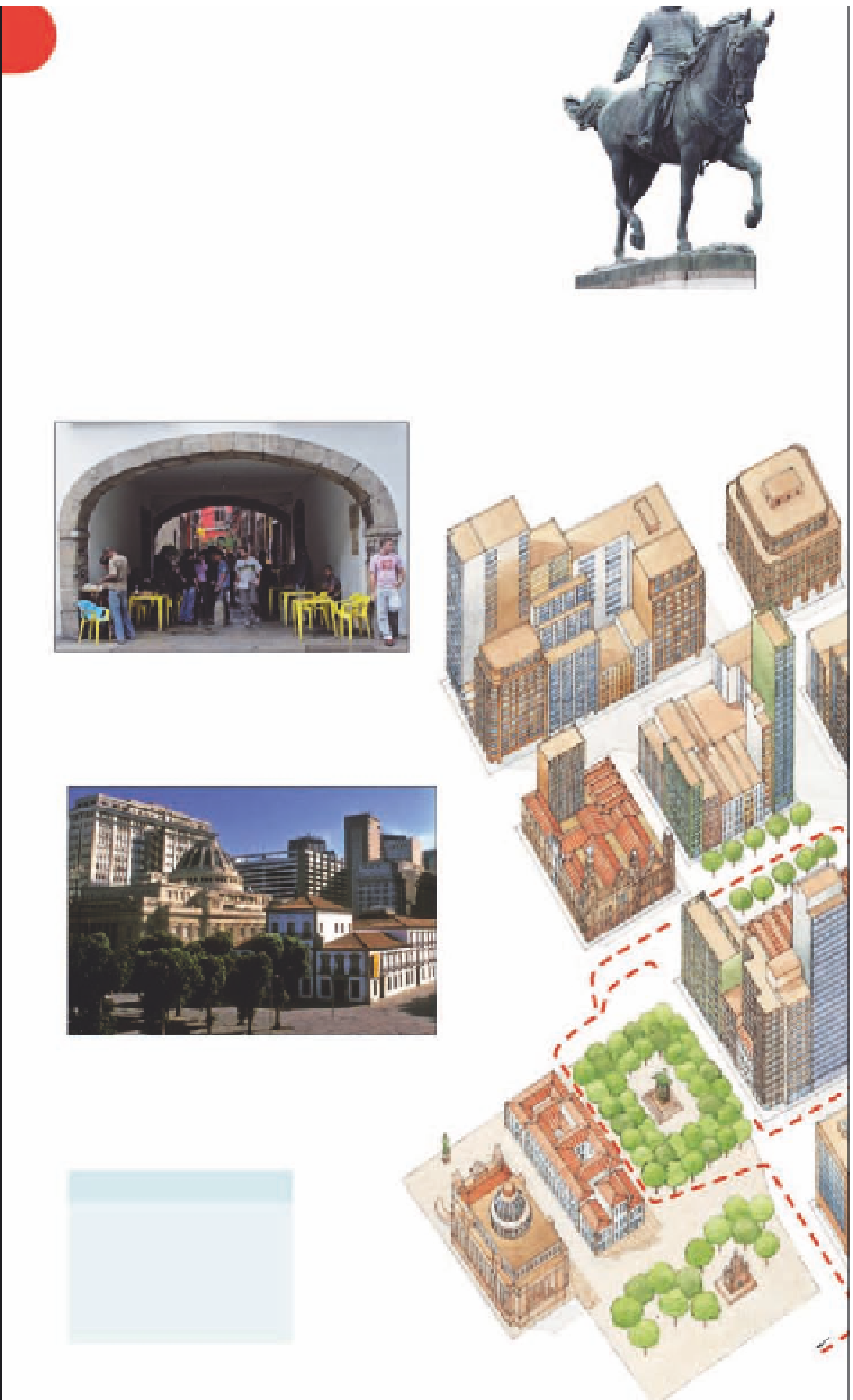Travel Reference
In-Depth Information
Street-by-Street: Praça XV
de Novembro & Centro
1
Originally called the Largo do Paço, Praça XV de
Novembro is the historic heart of Rio, even if it was
only so named after the declaration of the republic on
November 15, 1889. The Praça witnessed the arrival of
Dom João VI of Portugal in 1808 as he fled with his
court from Napoleon. The House of the Viceroy became
the Paço Imperial, and for a time the square was the
center of Brazil's political and commercial power.
Today, Praça XV and the surrounding area is packed
with historic buildings and streets. The square was
given a new lease of life in the late 1980s with the
restoration of the palace, which has acted as a catalyst
in bringing culture and life back to the city center.
Statue of General Osório
General Manuel Luís Osório
defended the Empire in the
War of the Triple Alliance
between 1864 and 1870
(see p53)
.
Nossa Senhora do
Monte do Carmo
once served as the
royal chapel.
.
Arco do Telles
Today a pedestrian exit, Arco de Telles dates
from 1757 and is all that remains of the old
Senate House that was destroyed by a fire in
1790. It is Rio's only surviving colonial arch.
Statue
of General
Osório
.
Paço Imperial
The Paço Imperial has been the backdrop
for many key events in Brazilian history,
including the signing of the Lei Aurea in
1888, abolishing slavery in Brazil.
STAR SIGHTS
. Arco do Telles
.
Chafariz da
Piramide
was
built in 1789 to
distribute fresh
water to the city
and to visiting ships.
Paço Imperial
. Nossa Senhora da
Candelária
Barcas Metro
Station
For hotels and restaurants in this region see pp366-9 and pp394-6













































